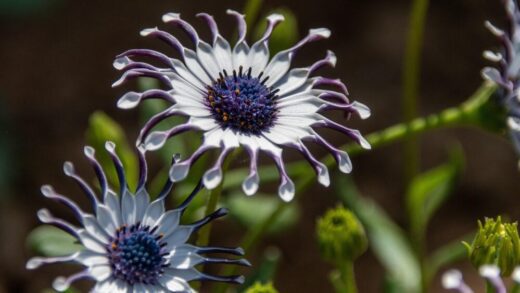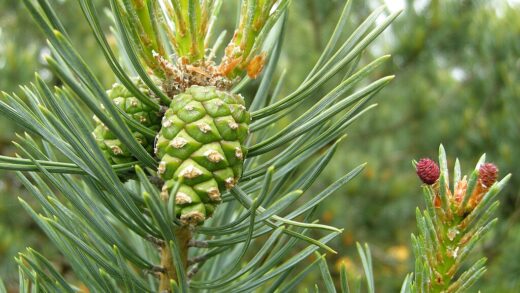Ensuring the Taiwanese toad lily successfully overwinters is crucial for its long-term survival and its ability to return with vigor each spring. As a perennial that originates from a temperate climate, it is well-equipped to handle cold winters, but it benefits from some preparatory care in the autumn to protect it from the harshest conditions. Proper wintering techniques focus on safeguarding the plant’s dormant underground rhizomes from extreme cold, fluctuating temperatures, and excessive moisture. By taking a few simple steps at the end of the growing season, you can provide the necessary protection to ensure this unique and elegant plant remains a cherished part of your garden for many years to come.
The winter hardiness of the Taiwanese toad lily is generally quite good, with the plant being reliably perennial in USDA hardiness zones 5 through 8, and sometimes even in zone 4 with adequate protection. The key to its survival lies in the health and condition of its underground rhizomes, which store the energy the plant needs to survive dormancy and produce new growth in the spring. A plant that has been well-cared-for throughout the growing season—provided with adequate moisture, nutrients, and proper light conditions—will have developed a strong, healthy rhizome system, making it inherently more capable of withstanding the rigors of winter.
The first step in preparing the Taiwanese toad lily for winter takes place after the first hard frost of the autumn. This frost will signal the end of the growing season, causing the leaves and stems to turn yellow or brown and die back. Once the top growth has been killed by the frost, it is best to cut the stems down to the ground, leaving stubs that are only an inch or two tall. This process, often referred to as autumn cleanup, is important for several reasons. It tidies the appearance of the garden bed and, more importantly, it removes dead plant material that could potentially harbor fungal spores or the eggs of pests over the winter.
After cutting back the dead foliage, the single most important action you can take to protect your toad lily is to apply a layer of winter mulch. Mulch acts as a protective blanket, insulating the ground and the dormant rhizomes beneath it. This insulation helps to prevent the ground from freezing and thawing repeatedly, a cycle that can heave plants out of the soil and damage their roots. It also provides an extra layer of protection against extreme, penetrating cold, particularly in gardens that lack reliable snow cover, as snow itself is an excellent natural insulator.
The ideal winter mulch should be light and airy, allowing some air and moisture to penetrate while still providing insulation. Good choices include shredded leaves, pine needles, straw, or shredded bark. Apply a generous layer, about two to four inches deep, over the crown of the plant after the ground has cooled down but before it freezes solid. Avoid using heavy, dense materials like whole leaves that can mat down, trap excessive moisture, and potentially lead to crown rot over the winter. This simple mulching step is the cornerstone of successful overwintering for the Taiwanese toad lily.
More articles on this topic
Preparing the plant for dormancy
The preparation for winter actually begins long before the first frost arrives. The care you provide in the late summer and early autumn directly impacts the plant’s ability to survive the cold months. During this period, the plant is not only producing its beautiful flowers but also actively storing carbohydrates and nutrients in its rhizomes. These stored energy reserves are what the plant will live on throughout its dormancy and what will fuel the initial burst of growth the following spring. Therefore, it is critical to keep the plant healthy and stress-free during this time.
Continue to provide consistent moisture to your toad lily right up until the ground freezes. Allowing the plant to become drought-stressed in the autumn can weaken it significantly and reduce the amount of energy it is able to store for the winter. Well-hydrated rhizomes are also better able to withstand cold temperatures than dehydrated ones. A healthy, hydrated plant entering dormancy is much like a well-fed animal entering hibernation; it simply has more resources to draw upon for survival.
It is important to cease all fertilization by mid-summer. Applying fertilizer, especially those high in nitrogen, late in the season can encourage the plant to produce a flush of new, tender foliage. This new growth will not have time to mature and “harden off” before the first frosts and will be extremely susceptible to cold damage. This not only wastes the plant’s valuable energy reserves but can also create wounds on the plant that could become entry points for disease. Allow the plant to follow its natural cycle of slowing down its growth as the days get shorter and cooler.
As autumn progresses, allow the plant’s foliage to die back naturally after being hit by a hard frost. Do not be tempted to cut it back while it is still green. In the weeks leading up to the first frost, the plant is actively retracting energy and nutrients from its leaves and stems and storing them in the rhizomes. Cutting the foliage back prematurely would interrupt this vital process and rob the plant of some of the resources it needs to survive the winter. Wait until the foliage is completely brown and withered before you reach for your pruners.
More articles on this topic
The importance of mulch
Mulch is the gardener’s best tool for ensuring the winter survival of perennials like the Taiwanese toad lily. Its primary function is not to keep the ground warm, but rather to keep it consistently cold. By insulating the soil, mulch moderates temperature fluctuations. It prevents the soil from rapidly warming up during a sunny winter day and then plunging back to freezing temperatures at night. This freeze-thaw cycle is very damaging to plant roots and can heave the entire plant crown out of the ground, exposing the delicate rhizomes to the elements.
The timing of mulch application is important. It is best to wait until after the ground has had a chance to cool down significantly, or even after the first light freeze. Applying mulch too early, while the ground is still warm, can trap that warmth and delay the plant’s entry into full dormancy. It can also create a cozy haven for rodents like voles and mice, which may then tunnel under the mulch and feed on the plant’s rhizomes during the winter. By waiting for colder weather, you ensure the plant is fully dormant and that any rodents have likely found other winter quarters.
The type of material used for winter mulch matters. As mentioned, light, airy materials are ideal. Shredded leaves are an excellent and readily available option for many gardeners. Pine needles (pine straw) are another fantastic choice as they do not compact and allow for good air and water penetration. Chopped straw or marsh hay also work well. Avoid using materials that become heavy and sodden when wet, such as whole maple leaves or thick layers of grass clippings, as these can trap too much moisture against the plant’s crown and promote rot.
In the spring, it is equally important to know when to remove the winter mulch. As the weather warms and the threat of hard frost has passed, begin to gently pull the mulch away from the crown of the plant. This allows the sun and air to warm the soil, signaling the plant to break dormancy and begin sending up new shoots. Leaving the mulch in place for too long can delay emergence and can create a damp environment that might rot the new, tender shoots. Rake the mulch back into the surrounding garden bed, where it will continue to benefit the soil as it decomposes.
Winter care in containers
Growing Taiwanese toad lilies in containers presents a different set of winter challenges. The soil in a pot is exposed to cold air from all sides, not just the top, which means it will freeze much more quickly and to a much colder temperature than the ground. A plant that is perfectly hardy in the garden may not survive the winter in an exposed container because its roots lack the significant insulation provided by the large mass of surrounding earth. Therefore, container-grown toad lilies require extra protection.
The best way to overwinter a potted toad lily in colder climates (zone 6 and below) is to move the container to a sheltered location. An unheated garage, a cold cellar, or a protected shed are all excellent options. The goal is to keep the plant dormant but prevent the soil from freezing solid for extended periods. The location should remain consistently cold, ideally between freezing and 40 degrees Fahrenheit (0 to 4 degrees Celsius), to ensure the plant does not break dormancy prematurely.
During its time in winter storage, the potted toad lily will need very minimal water. Since the plant is dormant and there is little evaporation, the soil will stay moist for a long time. Check the soil every month or so, and if it is completely dry, provide just a small amount of water to keep the roots from desiccating entirely. Do not keep the soil wet, as this will lead to root rot in a dormant plant. The aim is to keep the soil just barely damp.
If you do not have a suitable indoor storage location, you can try to insulate the pot outdoors. Move the container to a sheltered spot, such as against the foundation of the house and out of the winter wind. You can then group it with other pots or wrap the container in bubble wrap or burlap and stuff the wrapping with leaves for extra insulation. Another method is the “pot-in-pot” technique, where you sink the entire pot into a vacant spot in a garden bed, allowing the surrounding soil to provide insulation. This can be an effective way to protect the roots from extreme cold.




















